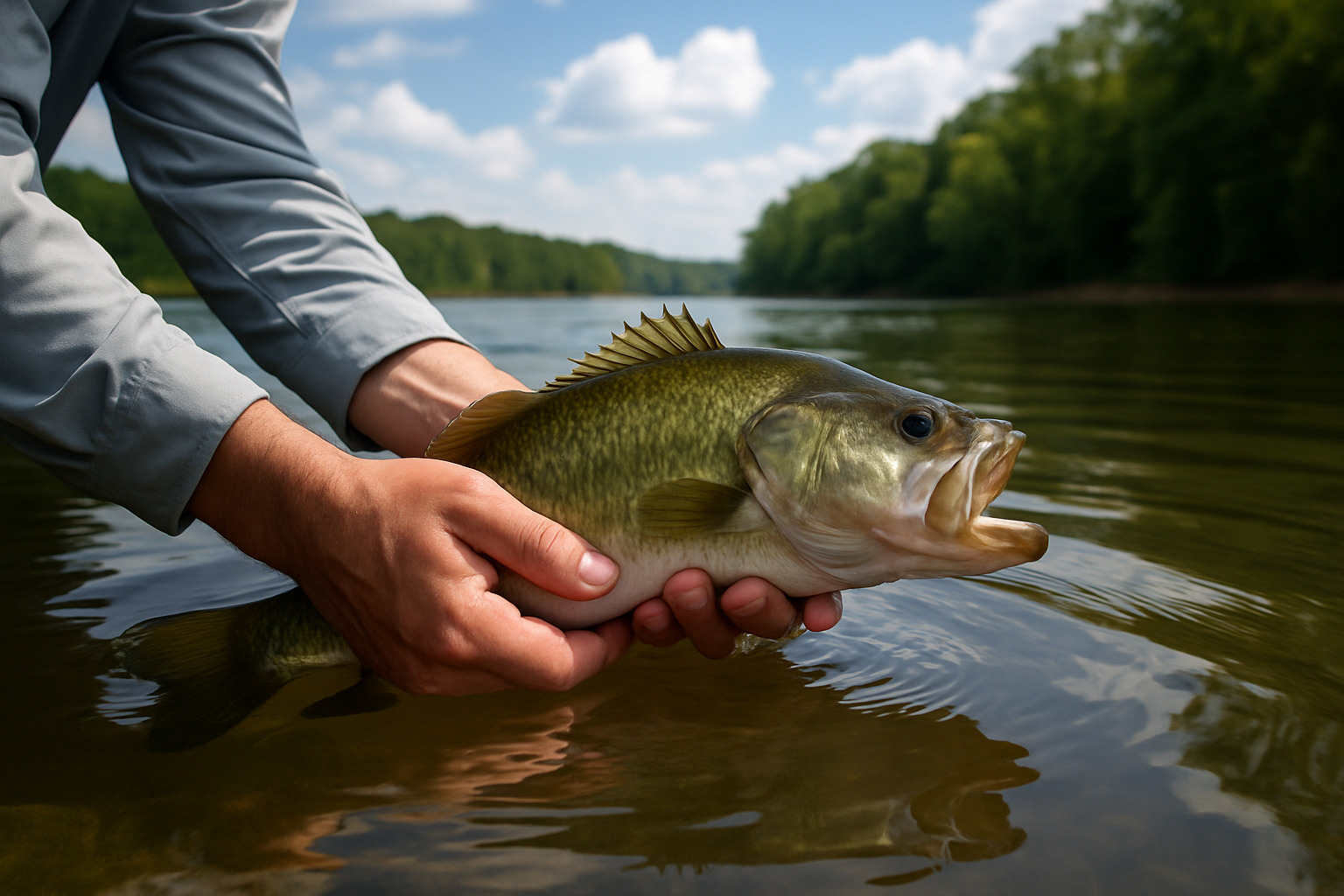Catch-and-release is more than a practice—it’s a responsibility. Anglers who fish Kentucky Lake know that releasing a fish should be more than tossing it back in the water. If done poorly, it may not survive. The key lies in reducing stress from the moment of hookup to the moment it swims away. Here’s how to do it right.
Why Fish Stress Matters
Stress affects fish much like it affects people—heart rate spikes, oxygen demand increases, and immune systems weaken. A stressed fish may swim off but die hours later. Reducing stress increases survival rates, supports fish populations, and keeps the lake thriving.
1. Use the Right Gear
Quick fights mean better outcomes. Using light tackle may be fun, but it often prolongs the fight. Choose gear that matches the species and size you’re targeting.
- Use barbless hooks or pinch barbs to ease removal.
- Circle hooks reduce gut-hooking in species that strike aggressively.
- Braided or fluorocarbon leaders can minimize breakage, reducing prolonged fights.
2. Limit Air Exposure
Fish are not built for breathing air. Even a few seconds can damage gills and eyes.
Stick to the 10-second rule:
- Remove the hook and snap a photo fast.
- Keep the fish underwater as much as possible.
- Wet your hands before handling.
Every second counts.
3. Handle with Care
Grip strength is no match for a fish’s organs. Improper handling can crush them.
Do this:
- Hold horizontally—never vertical by the jaw.
- Support under the belly with one hand.
- Keep it close to the water, ready to release.
Avoid dry surfaces like boat floors and rocks. Mucus loss leads to infections.
4. Know When to Quit
High temperatures and low oxygen levels strain fish during summer. During these times, even short fights can be fatal.
- Fish early or late in the day when water is cooler.
- Use a thermometer and avoid targeting deep-water species that suffer from barotrauma.
If you’re catching fish that float after release, it’s time to switch spots or call it a day.
5. De-Hook with Precision
Hook removal causes the most physical damage. Make it clean and quick.
- Carry needle-nose pliers or a hook remover.
- For deep hooks, cut the line. A fish is more likely to survive than if you rip it out.
- Don’t yank—wiggle gently and back the hook out the way it entered.
6. Avoid Tournaments That Don’t Prioritize Survival
Livewells, extended holds, and weigh-ins lead to higher mortality. If you’re joining an event, choose those with immediate release policies or “catch-photo-release” formats.
7. Revive Before Release
Fish aren’t always ready to bolt after you let go. If it floats or seems sluggish, revive it properly.
Here’s how:
- Hold the fish facing into the current or gently move it back and forth to flow water through the gills.
- Watch for strong tail kicks before letting go.
- Don’t release until it can maintain balance.
8. Know Species-Specific Needs
Different fish need different handling. Largemouth bass tolerate brief air exposure, but trout don’t. Catfish can endure some handling, but their skin is sensitive. The more you understand your catch, the better you’ll treat it.
9. Educate Others on the Water
Set an example. Share techniques without lecturing. Most anglers want to do the right thing—they just don’t always know how.
Lead with action. Respect spreads faster than words.
10. Make Catch-and-Release Count
It’s not enough to release the fish—it needs to swim off strong. If it floats, sinks motionless, or struggles, the effort falls short. Treat every fish like it matters. Because it does.
Kentucky Lake gives anglers so much. Practicing thoughtful catch-and-release helps give back. Fish live longer. Populations stay healthier. And future casts stay just as exciting.
